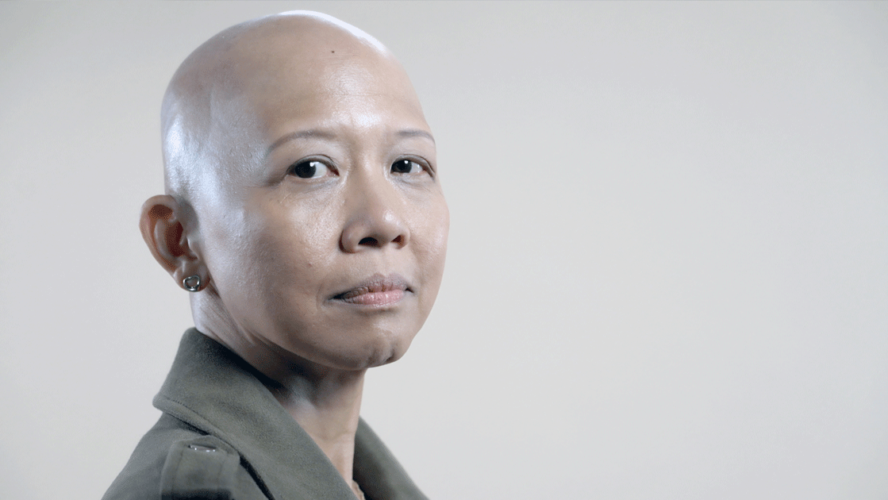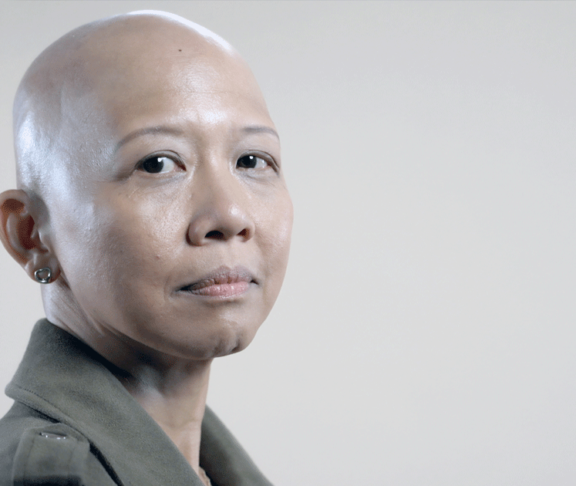
Dr. Irina Turchin
Dermatologist & Medical Director, Brunswick Dermatology Centre

Carolynne Harrison
President, Canadian Alopecia Areata Foundation
Alopecia areata is an autoimmune disease that not only has cosmetic implications but can be associated with a severe impact on quality of life.
Alopecia areata (AA) is an autoimmune inflammatory disease where the immune system attacks hair follicles causing unpredictable hair loss. “It can affect any hair bearing area, including the scalp, eyebrows, eyelashes, beard, and body hair,” says Dr. Irina Turchin, Dermatologist and Medical Director, Brunswick Dermatology Centre in Fredericton, New Brunswick.
The cause is unknown but thought to involve immune system dysregulation in genetically predisposed individuals. It affects both children and adults and is not contagious. “When localized, AA causes round patches of hair loss, and can sometimes regrow spontaneously, but in severe cases, it can affect the entire scalp (alopecia totalis) or face and body (alopecia universalis) and hair loss can be permanent,” says Dr. Turchin.
Mental, emotional, and financial costs
AA has considerable impact on quality of life. “Loss of hair on the scalp requires sun and heat loss protection, and the loss of the eyebrows and eyelashes can be uncomfortable when exposed to the sun or wind,” says Dr. Turchin. “Many patients experience burning, itching, and painful scalp sensations, as well as discomfort from wearing a wig,” says Carolynne Harrison, President, Canadian Alopecia Areata Foundation (CANAAF).
AA also affects a person’s mental and emotional well-being. “Hair is so much more than an aesthetic feature. It plays a significant role in shaping our identity,” says Harrison. “A diagnosis often leads to anxiety, depression, and low self-esteem, along with feelings of fear, shame, and social isolation. Children and teenagers often experience bullying,” says Harrison. Caregivers and family members are also affected. “Many report feelings of sadness, helplessness, and guilt,” says Harrison.
In addition to the physical and emotional burden, people with AA incur high financial costs in managing their disease through wigs, false eyelashes, and procedures such as microblading, hyperpigmentation, and permanent makeup tattooing. “If insurance coverage is provided for a hairpiece, it’s only for a small portion of the entire cost, so basically a once-in-a-lifetime allowance for a lifelong disease,” says Harrison.
There are also costs associated with time lost from work to attend medical appointments, and patients may decline work opportunities due to their disease. “Some patients and their caregivers have reported that they would like to attend psychology counselling but are unable to afford it,” says Dr. Turchin.
Support available to patients and their families
AA is an autoimmune skin disease with high unmet need for public education, awareness, and access to safe and effective treatments. “It must not be viewed as cosmetic nuisance,” says Dr. Turchin.
Until a cure is found, raising awareness and fostering productive conversations will be critical to expanding health insurance policies to cover costs of medications , wigs, and therapeutic counselling services. CANAAF works to fill this gap through an array of services. “One of our biggest challenges has been making the wider community, aware of CANAAF and the services we provide. It’s especially important that newly diagnosed patients and their families know we are here to support them,” says Harrison.
To learn more, please visit canaaf.org.



